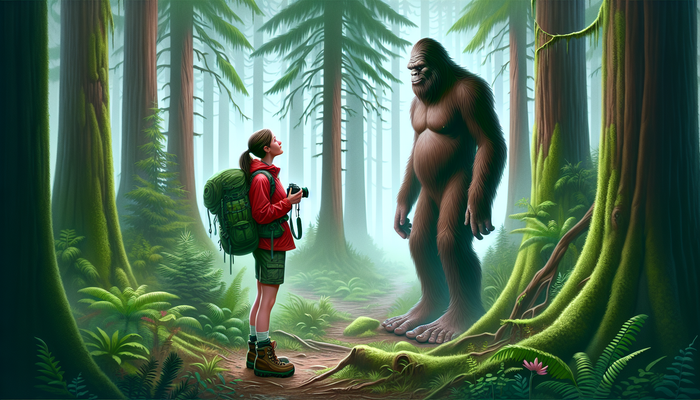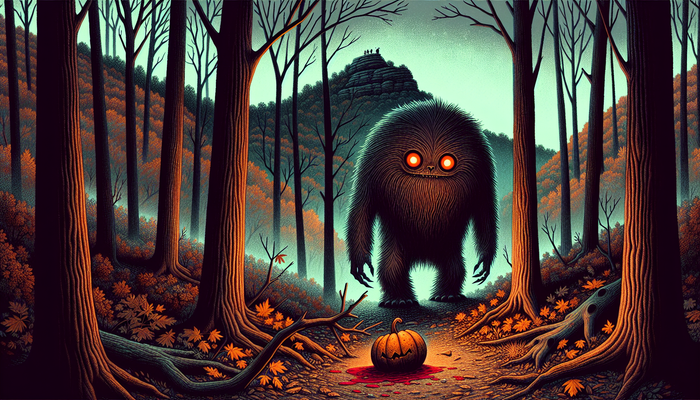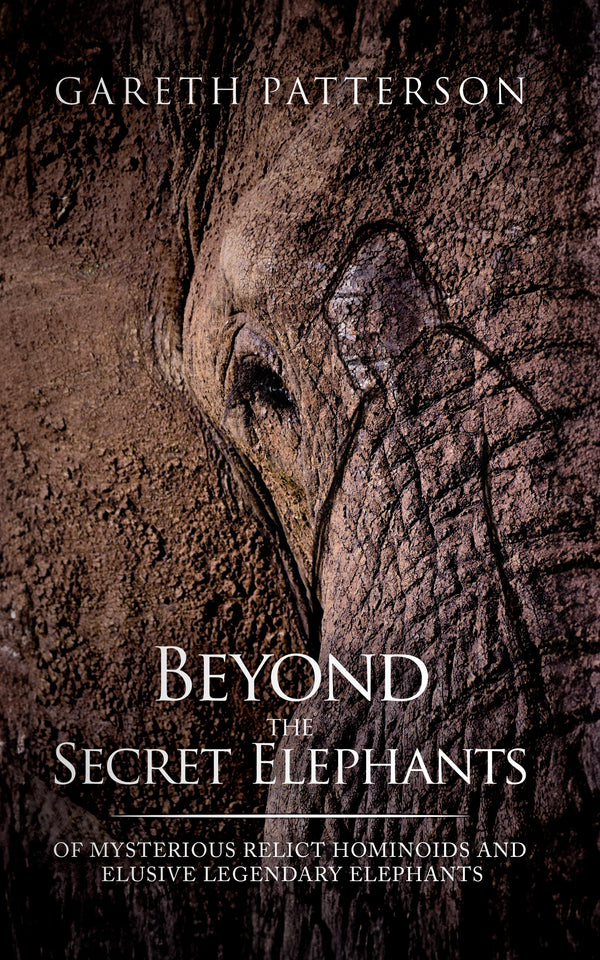Colorado's Cryptids

By Ava Martinez, Bigfoot Researcher and Teacher
In the realm of the mysterious and the unexplained, few places captivate the imagination quite like the rugged landscapes of Colorado. As a cryptozoologist and biology teacher, I have long been drawn to the tales of strange creatures that lurk in the shadows of the Centennial State's vast wilderness. From the towering peaks of the Rocky Mountains to the deep, dark mines that punctuate the earth, Colorado is a hotspot for cryptid sightings and legends that have endured for generations.
Join me on a chilling journey into the unknown as we uncover the stories behind Colorado's most captivating cryptids. We'll explore the elusive Bigfoot, the terrifying Slide-Rock Bolter, the mischievous Tommyknockers, the enigmatic Colorado Yeti, and the chilling Vampire of Lafayette. Along the way, we'll delve into the history, eyewitness accounts, and theories surrounding these mysterious creatures, seeking to separate fact from fiction and legend from reality.
Bigfoot/Sasquatch: Colorado's Elusive Ape-Man
Of all the cryptids that call Colorado home, none is more iconic or well-known than Bigfoot, also known as Sasquatch. This hairy, bipedal, ape-like creature has been the subject of countless sightings and stories across the state, with reports describing a towering, massively built beast that stands upwards of eight feet tall. Eyewitnesses often note the creature's foul, pungent odor, which some believe is a defense mechanism or a marker of its territory.
Colorado has long been a hotspot for Bigfoot activity, with sightings concentrated in the counties of Park, Teller, Conejos, Lake, and Larimer. The Pikes Peak region, in particular, has gained notoriety for its Bigfoot encounters, prompting the installation of warning signs along the highway leading to the mountain's summit. These signs serve as a tongue-in-cheek nod to the region's Bigfoot lore, but for those who have encountered the creature firsthand, the experience is anything but humorous.
One of the most intriguing aspects of Colorado's Bigfoot legends is the story of the Bailey Bigfoot. This particular creature is said to possess supernatural abilities, including the power to traverse through alien portals located near a sacred Native American tree in the town of Bailey. The tree, which has become a focal point for Bigfoot enthusiasts and researchers, is believed to be a gateway to another dimension or realm where the creature resides.
The town of Bailey has embraced its Bigfoot connection, with the establishment of the Sasquatch Outpost, a museum and gift shop dedicated to all things Bigfoot. Here, visitors can learn about the history of Bigfoot sightings in the area, examine casts of alleged Bigfoot footprints, and even purchase Bigfoot-themed souvenirs. The Outpost serves as a testament to the enduring fascination with this elusive creature and the impact it has had on the local community.
As a cryptozoologist, I have spent countless hours in the forests of Colorado, searching for evidence of Bigfoot's existence. While I have yet to encounter the creature myself, I have spoken with numerous eyewitnesses who have shared their experiences with me. Their stories, often tinged with a mixture of awe and fear, have only fueled my desire to unravel the mystery surrounding this enigmatic being.
Some skeptics argue that Bigfoot sightings can be attributed to misidentifications of known animals, such as bears or even humans in costumes. Others point to the lack of physical evidence, such as bodies or bones, as proof that the creature is nothing more than a myth. However, as a researcher, I believe that the sheer volume of sightings and the consistency of the descriptions across time and space suggest that there may be more to the Bigfoot legend than meets the eye.
The Slide-Rock Bolter: Terror of the Steep Slopes
Deep in the heart of the Colorado Rockies, a terrifying creature is said to lurk on the steep, treacherous slopes of the mountains. The Slide-Rock Bolter, a massive, whale-like beast with a long, hook-shaped tail, is a creature straight out of a lumberjack's nightmare. According to legend, this bizarre animal lies in wait on the mountainside, anchoring itself to the rocky crags with its powerful tail.
The origins of the Slide-Rock Bolter can be traced back to the tall tales and folklore of the lumberjacks and miners who worked in Colorado's rugged wilderness during the late 19th and early 20th centuries. These hardened men, faced with the daily dangers of their professions, would gather around campfires at night and spin yarns about the strange and terrifying creatures that inhabited the mountains.
The Slide-Rock Bolter's unique appearance and hunting method have captured the imaginations of generations of Coloradans. The creature is described as having a massive, elongated body, similar to that of a whale, with a large head and a cavernous mouth filled with razor-sharp teeth. Its eyes are said to be small and beady, glinting with a malevolent intelligence as it surveys its surroundings.
But it is the Slide-Rock Bolter's tail that truly sets it apart from any other creature, real or imagined. The tail is long and muscular, with a sharp, hook-like appendage at the end. The Bolter uses this hook to anchor itself to the mountaintops, waiting patiently for unsuspecting prey to wander into its path.
When an unfortunate animal or human comes within range, the Slide-Rock Bolter releases its grip on the mountain and propels itself downward at breakneck speeds, using its slick, greasy underside to slide effortlessly over the rocky terrain. As it hurtles down the slope, the creature opens its gaping maw, ready to swallow its victim whole.
The destructive power of the Slide-Rock Bolter is the stuff of legend. Eyewitnesses claim that the creature's massive bulk can flatten entire swaths of forest, leaving behind scarred and broken trees in its wake. Some even say that the Bolter is responsible for the numerous rockslides and avalanches that plague the Colorado mountains, its passage triggering catastrophic events that can reshape the landscape in an instant.
One of the most famous tales of the Slide-Rock Bolter involves a quick-thinking forest ranger who devised a plan to rid the mountains of this menace once and for all. The ranger, whose name has been lost to history, is said to have created a dummy out of logs and cloth, dressing it in the garb of a typical hiker. He then stuffed the dummy with explosives and placed it in a clearing on the mountainside, directly in the path of a known Slide-Rock Bolter.
As the creature launched itself down the slope, intent on devouring its newest victim, the ranger detonated the explosives, blowing the Bolter to smithereens. The resulting explosion was so powerful that it leveled half the town of Rico, located in the southwestern corner of the state. While the tale of the exploding dummy is almost certainly apocryphal, it serves as a testament to the enduring power of the Slide-Rock Bolter legend.
As a cryptozoologist, I have long been fascinated by the stories of the Slide-Rock Bolter. While there is no concrete evidence to support the creature's existence, I believe that the legend may have its roots in a real, albeit undiscovered, animal. Some researchers have suggested that the Bolter could be a remnant population of a prehistoric whale species, adapted to life on land. Others have proposed that it may be a previously unknown type of giant, land-dwelling fish, similar to the extinct placoderms of the Devonian period.
Regardless of its true nature, the Slide-Rock Bolter remains a potent symbol of the untamed wilderness of Colorado and the dangers that lurk within. Its legend serves as a reminder that, even in our modern age of satellite imagery and GPS tracking, there are still mysteries waiting to be uncovered in the remote corners of our world.
Tommyknockers: Mischievous Spirits of the Mines
Beneath the surface of Colorado's rugged landscape, a different kind of cryptid is said to dwell in the dark, dank depths of the state's numerous mines. The Tommyknockers, small, gnome-like creatures with an affinity for mischief and mayhem, have been a part of Colorado's mining lore for generations, their legend brought to the New World by the Cornish miners who flocked to the state during the gold and silver rushes of the 1800s.
According to Cornish folklore, Tommyknockers are diminutive, humanoid beings that stand no more than two feet tall. They are often described as having large, bulbous heads, spindly arms and legs, and wrinkled, leathery skin. Miners who claimed to have encountered these creatures often reported that they wore miniature versions of traditional mining garb, complete with tiny pickaxes and helmets.
But the Tommyknockers' appearance belies their true nature. These creatures are said to possess a dual personality, capable of both helping and hindering the miners who toil in their underground domain. On one hand, Tommyknockers are known to warn miners of impending cave-ins and other dangers, their eerie knocking on the walls of the mine serving as a signal to evacuate before disaster strikes.
Some miners even claimed that the Tommyknockers would guide them to rich veins of ore, their uncanny knowledge of the earth's hidden treasures leading to untold riches for those who heeded their advice. In this sense, the Tommyknockers were seen as benevolent spirits, watching over the miners and ensuring their safety and prosperity.
However, the Tommyknockers also had a darker side. These mischievous creatures were notorious for their love of pranks and practical jokes, often stealing tools, food, and other supplies from the miners when they weren't looking. Some miners even reported that the Tommyknockers would move their equipment or rearrange their work areas overnight, leading to confusion and frustration when the workday began.
The legend of the Tommyknockers is so ingrained in Colorado's mining history that it has inspired countless stories, songs, and works of art over the years. One of the most famous tales involves the Phoenix Gold Mine in Idaho Springs, where the spirits of deceased miners are said to manifest as Tommyknockers, their ghostly forms roaming the tunnels and shafts of the mine.
According to local lore, these spectral Tommyknockers will knock on the walls of the mine to warn of impending danger, just as their living counterparts did in centuries past. Some even claim that the Tommyknockers will guide lucky miners to hidden caches of gold and silver, their supernatural knowledge of the mine's secrets leading to untold riches for those who know how to listen.
The legend of the Phoenix Gold Mine Tommyknockers has become so popular that it has inspired a number of local businesses and attractions. The Tommyknocker Brewery, located in Idaho Springs, pays homage to these mythical creatures with its name and decor, featuring a whimsical, bearded Tommyknocker as its mascot. The brewery's signature beers, with names like "Maple Nut Brown Ale" and "Pick Axe IPA," further cement its connection to Colorado's mining heritage.
But not all stories of the Tommyknockers are so lighthearted. Some miners believed that encountering one of these creatures was a sign of impending doom, with those who saw a Tommyknocker often meeting an untimely end soon after. Others claimed that the Tommyknockers were actually the malevolent spirits of miners who had died with unfinished business, their restless souls seeking revenge on the living for the injustices they had suffered in life.
As a cryptozoologist, I find the legend of the Tommyknockers to be one of the most fascinating and enduring tales in Colorado's rich folklore. While there is no concrete evidence to support the existence of these mythical creatures, the stories and traditions surrounding them offer a unique window into the lives and beliefs of the miners who helped shape the state's early history.
In many ways, the Tommyknockers can be seen as a metaphor for the dangers and uncertainties of life in the mines. The idea that these creatures could both help and hinder the miners reflects the precarious nature of their work, where a single misstep or stroke of bad luck could mean the difference between life and death.
At the same time, the legend of the Tommyknockers speaks to the resilience and ingenuity of the human spirit. Faced with the constant threat of cave-ins, explosions, and other disasters, the miners of Colorado found solace and strength in the belief that they were not alone in their struggles. The Tommyknockers, whether real or imagined, served as a reminder that even in the darkest depths of the earth, there was still hope to be found.
The Colorado Yeti: Abominable Snowman of the Rockies
High in the snow-capped peaks of the Colorado Rockies, a mysterious creature is said to roam the icy wilderness, leaving behind massive footprints and sparking the imaginations of all who hear its eerie cries echoing through the mountains. This is the Colorado Yeti, a cousin of the famed Abominable Snowman of the Himalayas, and a cryptid that has captured the hearts and minds of Coloradans for generations.
Like its Himalayan counterpart, the Colorado Yeti is described as a tall, bipedal creature covered in long, shaggy white fur. Eyewitnesses claim that the beast stands upwards of eight feet tall, with broad shoulders and a barrel-shaped chest that hints at its incredible strength and power. Its face is said to be ape-like, with deep-set eyes and a prominent brow ridge that gives it a fierce, almost human-like expression.
One of the most intriguing aspects of the Colorado Yeti legend is the creature's reported nocturnal habits. Unlike many other cryptids, which are often spotted during the day, the Yeti is said to be most active at night, roaming the high-altitude forests and tundra under the cover of darkness. Some researchers believe that this may be an adaptation to the harsh, unforgiving environment of the Rockies, where temperatures can plummet to well below freezing once the sun goes down.
The Colorado Yeti first gained widespread attention in the 1970s, when a series of sightings near the Arapahoe Basin Ski Area sparked a flurry of interest in the creature. One of the most famous encounters occurred in 1973, when a skier reported seeing a large, white, hairy creature loping across the slopes late at night. The skier, who wished to remain anonymous, described the creature as having long arms and a face that resembled a cross between a human and an ape.
News of the sighting quickly spread, and soon other skiers and hikers in the area began reporting similar encounters. Some claimed to have found massive, humanoid footprints in the snow, while others reported hearing strange, guttural cries echoing through the mountains at night. The Arapahoe Basin Yeti, as it came to be known, quickly became a local legend, with many residents of the surrounding towns claiming to have seen the creature for themselves.
As a cryptozoologist, I have long been fascinated by the Colorado Yeti and the stories surrounding its existence. While some skeptics dismiss the creature as nothing more than a myth or a hoax, I believe that there may be more to the legend than meets the eye.
From Bigfoot to UFOs: Hangar 1 Publishing Has You Covered!
Explore Untold Stories: Venture into the world of UFOs, cryptids, Bigfoot, and beyond. Every story is a journey into the extraordinary.
Immersive Book Technology: Experience real videos, sights, and sounds within our books. Its not just reading; its an adventure.



























